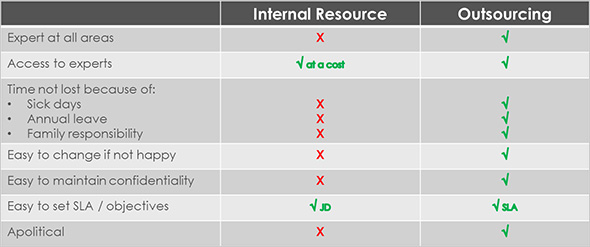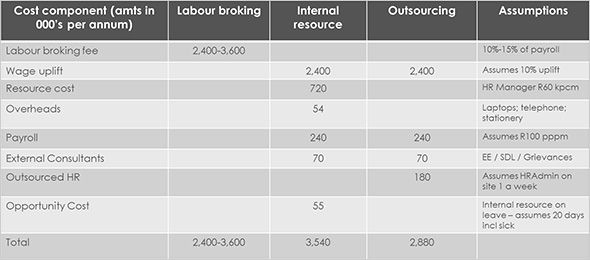Many employers in South Africa use labour brokers (TES). Often, they continue this practice because they don’t feel able to manage the volume of workers together with the HR commitment (some employers may only have ~100 permanent staff, but engage 1,000 temporary workers). Following the ConCourt ruling, employers are scared they will not be able to manage the additional workers internally and the additional cost will put them out of business. This is not the case and there are alternatives available to employers that should result in minimal extra work for them and marginal to less cost depending on how they approach the transition.
What does a labour broker do?
A labour broker effectively performs a number of tasks for an employer including:
- Recruiting and contracting workers
- Managing these workers (the client would manage them operationally)
- Run payrolls and pay the workers
- Manage relationships with third parties including unions/bargaining councils
- Manage IR issues and terminate the workers’ employment
Potential Options
Employers in the face of the Concourt ruling could choose the following options:
- Do nothing and face significant financial risk; or
- Engage the TES workers directly and manage them internally; or
- Engage the TES workers directly and outsource the processes performed by the labour broker previously
Comparison of Options
The table below illustrates the comparison between trying to manage the TES workers internally and outsourcing. We don’t look at the option of doing nothing because it really doesn’t make much sense financially or form a risk perspective.

Cost Comparison
As cost is a significant factor we have also included a comparison below between labour broking services, managing internally and outsourcing. We have assumed a company with 200 TES workers currently and assumed a current labour broking fee of between 10% and 15% of payroll.

For a more detailed overview the table below illustrates the key assumptions and working for each element.

The above table does not consider any savings through efficiency gains by managing and controlling the workers better. Previously there would have been no incentive to upskill.
Conclusion
Outsourcing is a clear option to better manage your risk and financial exposure if you currently use TES workers. We would recommend you do a review of your business and individual circumstances before you make a decision. If managed well the transition has the potential to improve your business.

